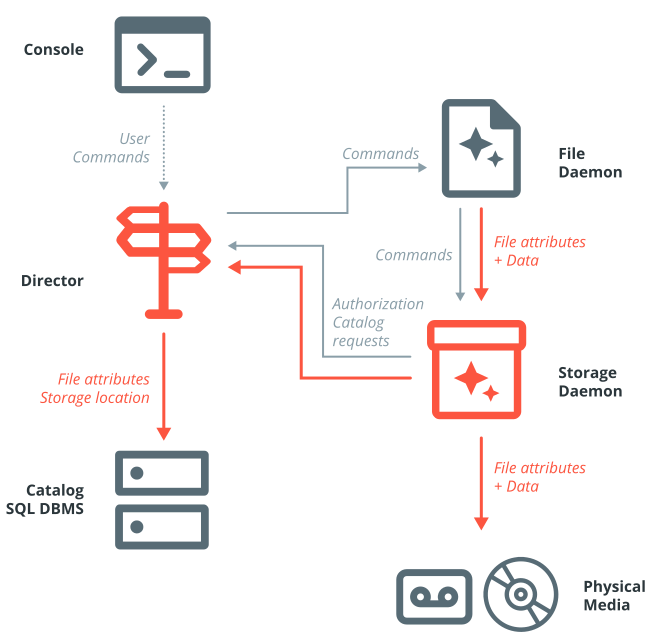Bacula Enterprise Architecture
The following document aims at describing the components of Bacula Enterprise independently, and showing how they work together. It is meant for anybody who wants to have basic understanding of how Bacula is designed.
Bacula Enterprise is made up of the following three core components that work smoothly together:

What is more, vital part of the Bacula architecture are also components/services such as:
The flow between particular components is quite simple.

When there is a need to perform any operation in Bacula, one can access the Console and order it. The Console informs the Director about the requested operation, e.g. backup. The Director, being the main Bacula server, schedules and directs the operation. It contacts the chosen Client (File Daemon), and points to the files to be backed up and informs it where it will be saved. It also communicates with the Storage Daemon and suggests where the SD should back up the chosen data and file attributes to Pools and Volumes. The Client sends the data to the Storage Daemon. At the same time, completely automatically, the Catalog is updated with the information about the operation.
The Bacula Architecture also contains Plugins. This component is strictly connected to the File Daemon, or Storage Daemon as the plugins are added to the File/Storage Daemons. They facilitate the backup operation of certain files, e.g. the ones that are managed by another application.
See also
Go back to:
Go to:
Go back to the Bacula Enterprise Fundamentals chapter.